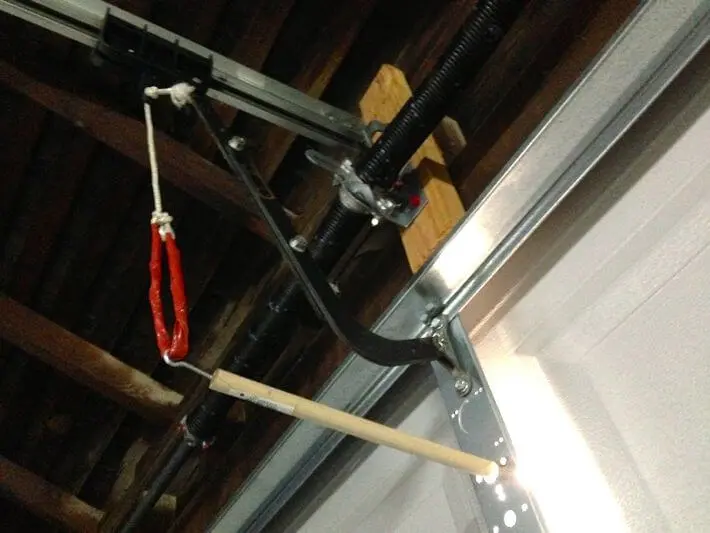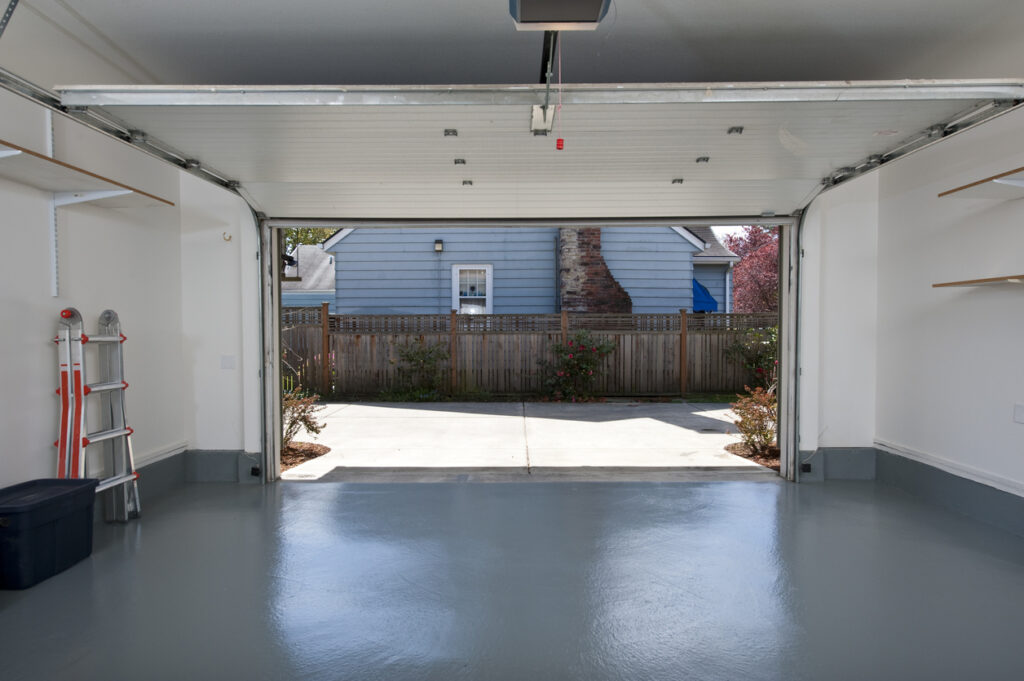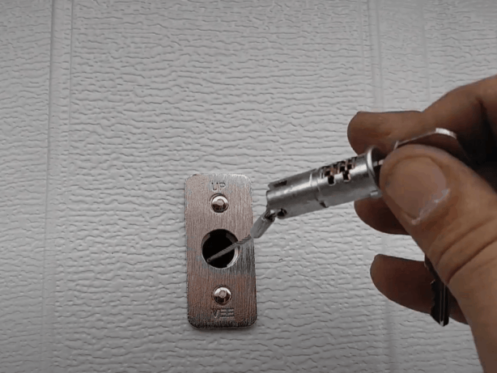Power outages are unpredictable, and when your garage door opener stops working, it can disrupt your entire day. If you need to get your car out or secure your home, knowing how to open a garage door without power is essential. The good news is that most garage doors include a manual release system designed for this exact situation.
In this guide, you’ll learn how the emergency release works, how to open your garage door safely, and what to avoid during the process.
How To Use the Emergency Release Cord on Your Garage Door
The emergency release cord allows you to disconnect the garage door opener from the door so you can lift it manually. This is the first step when trying to open the garage door without power.
Why This Matters
If the opener stays engaged, the door will not move by hand. Pulling the cord switches the door into manual mode.
Steps To Release The Emergency Cord
- Check for the red emergency cord attached to the opener rail.
- Grip the handle firmly to avoid slipping.
- Pull straight down until you hear or feel the door disengage.
- Test by lifting the door a few inches to confirm manual control.
If the cord does not release easily, stop and avoid forcing it. There may be tension problems in the torsion spring or extension spring that require a technician.

Steps To Open A Manual Garage Door Safely During A Power Outage
Once the opener is disconnected, you can lift the garage door manually. Garage doors are heavy, so technique matters for your safety. Read how to lock garage door from inside
Follow These Safe Steps
- Stand centered behind the door for balance.
- Place both hands under the door and lift gently.
- Raise the door until it is fully open and secured in place.
- Do not walk under the door until you are sure it will stay open.
If your door feels extremely heavy, stop immediately. This may indicate a broken spring, and opening it manually could be dangerous.
Safety Tips For Opening A Garage Door Without Electricity
Safety sensors and garage door motor functions do not work during a power outage, so take extra precautions.
Important Safety Practices
- Keep children away from the garage area.
- Avoid pulling the emergency release cord if the door is open.
- Never attempt to lift a door with a broken torsion spring.
- Do not try to manually reconnect the opener while the door is up.
Power outage or not, the garage door’s weight and moving parts demand careful handling.
Common Mistakes To Avoid When Opening A Garage Door Manually
Homeowners often make mistakes that can cause damage or injury when using the manual release.
Mistakes You Should Avoid
- Using excessive force to lift the door.
- Pulling the release cord while the door is partially open.
- Trying to open the door with objects like brooms or metal poles.
- Ignoring signs of mechanical strain such as grinding sounds.
Avoiding these mistakes protects your tracks, rollers, and safety sensors from damage.
How The Garage Door Emergency Release System Works
The emergency release system is a built-in safety feature that disconnects the garage door opener from the trolley.
Key Components Involved
- Garage door opener trolley
- Emergency release lever and cord
- Torsion spring or extension spring system
- Safety sensors and lock mechanism
When you pull the cord, it unlocks the trolley so the door moves freely without the garage door motor.
Why Garage Doors Get Stuck During Power Cuts
Your garage door might get stuck even after pulling the emergency release. This usually means a mechanical issue, not a power problem.
Common Reasons
- Damaged rollers or misaligned garage door parts
- Broken torsion spring or extension spring
- Rusted or jammed tracks
- Door weight imbalance
If your door still refuses to budge, it’s time to call a professional for repairs.
Simple Tools That Help Open A Garage Door During A Power Failure
You do not always need tools, but some can make the job safer and easier.
Helpful Tools
- Step stool for reaching the emergency cord on tall doors
- Flashlight to see the components clearly
- Lubricant spray for stuck rollers
- Locking pliers to secure the door once open
These tools can also help you manually open your garage door if the springs or rollers are stiff.
Garage Door Upgrades
If power outages are frequent in your area, consider installing upgrades that make manual operation easier.
Useful Upgrades
- Battery backup garage door opener. Know more changing the battery in the garage keypad.
- Reinforced emergency release cord
- High-cycle torsion spring for smoother lifting
- Smart opener with power outage alerts
These upgrades improve both safety and reliability for long term use.
How To Secure Your Garage After Opening It Manually
Once the door is open, you need to prevent unauthorized access or accidental closing.
Steps To Secure Your Garage
- Prop the door open using a locking clamp on the track.
- Keep your garage door lock engaged if operating manually for long periods.
- Reconnect the opener only when electricity returns and the door is closed.
A secure garage protects your home even when the power is out. While opening your garage door manually is a relatively straightforward task, there are some instances where it’s best to call a professional.
Conclusion
Knowing how to open a garage door without power helps you stay prepared during outages. By using the emergency release correctly, lifting the door safely, and avoiding common mistakes, you can operate your garage door with confidence. For persistent issues or mechanical problems, reach out to a professional to keep your system reliable.
If you need professional assistance or garage door repairs, BDK Door is ready to help.
Read More about automatic garage door repair in South Barrington, IL

FAQs
1. How Do I Open My Garage Door If The Power Is Out?
Use the emergency release cord to disconnect the opener, then lift the door manually using both hands.
2. Is It Safe To Open a Garage Door Manually?
Yes, if the springs are intact. If the door feels too heavy or uneven, do not force it.
3. How Do I Reconnect The Garage Door Opener After Power Returns?
Close the door fully, then pull the release cord toward the opener to reengage the trolley.
4. Why Won’t My Garage Door Open Manually?
You may have a broken torsion spring, jammed roller, or damaged track. These require professional repair.
5. Can I Prevent This Problem In The Future?
Installing a battery backup garage door opener ensures you can open the door even during an outage.

